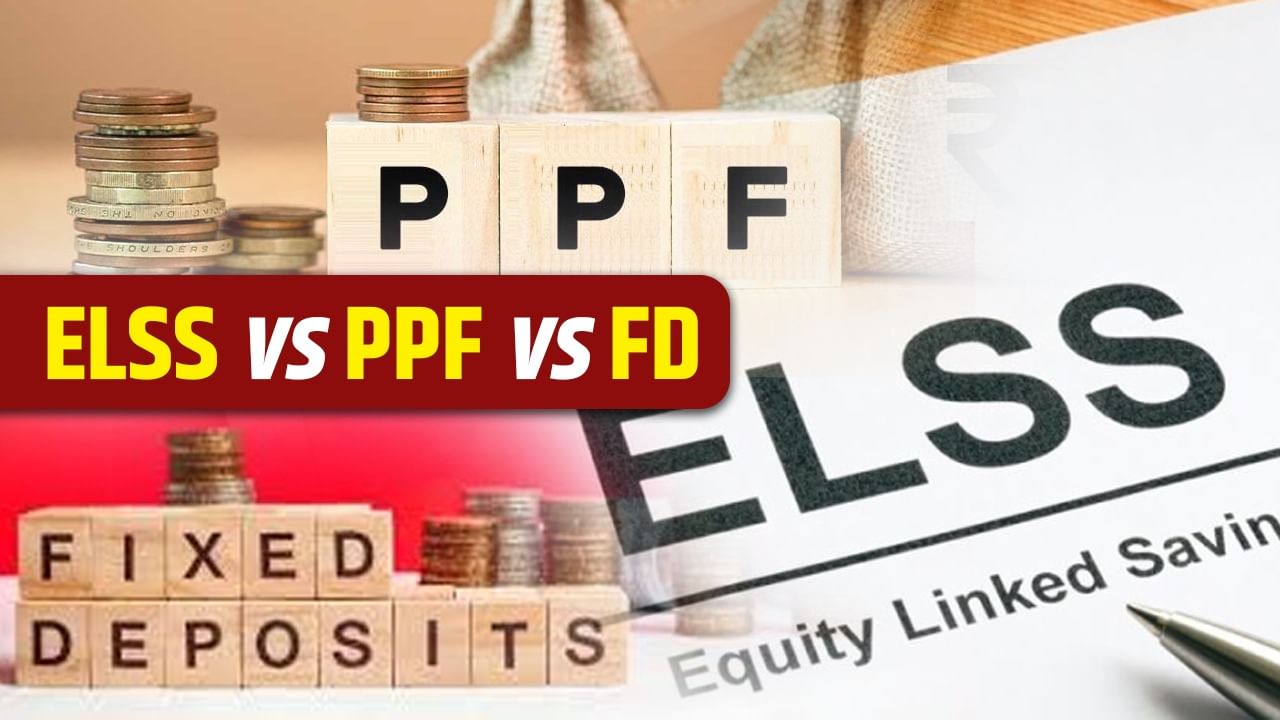Which scheme will be better
Amidst the turmoil in the stock market, retail investors always wonder which of the investment options available in the market will be better for them. That means they will suffer less loss by investing in it. Or you will get more interest. In such a situation, today we are going to tell you in detail about ELSS, PPF and FD schemes. How much interest is given in which scheme and which one gives more benefit?
ELSS, PPF vs FD
- ELSS- For those who are not aware of it, let us tell them that Equity Linked Savings Scheme or ELSS is a type of mutual fund which gives exemption of up to Rs 1.5 lakh annually under Section 80C. These mutual funds invest in shares and their lock-in period is three years. According to SEBI rules, ELSS mutual funds have to invest at least 80 percent of their total corpus in shares.
- PPF- At the same time, Public Provident Fund is a government savings scheme which gives assured returns. Currently the interest rate on PPF is 7.1 percent per year. Like ELSS, investment in PPF gets a rebate of up to Rs 1.5 lakh every year under Section 80C of the Income Tax Act. PPF has a long lock-in period of 15 years.
- FD- FD is also an investment scheme offered by banks which gives a slightly lower interest rate around 6-6.5 percent per annum. There is no tax exemption on these and the income earned from them is taxable. However, there is no lock-in period in these.
Where will you get more discount?
There is no exemption on investment in ELSS and PPF in the new tax regime, so should investors stay away from them? According to Mint report, experts do not recommend looking at any investment only for tax savings. There is no need for any investment to save tax in the new tax system. This has led to a decline in inflows into ELSS funds as many middle-income group people are choosing the new tax regime, which is also the default option. But when it comes to investment, it should not be done just to save tax but to fulfill your financial goals. ELSS is still good for those who want to invest in the stock market and want to be disciplined in investing. Since the money invested in ELSS cannot be withdrawn for 3 years, it motivates investors to stay in shares for at least 3 years and earn profits.
Where do you get more returns?
Talking about returns, PPF investment is better than FD for two reasons. First, it gives 7.1 percent interest per year compared to 6-7 percent interest available on FD. At the same time, ELSS is considered better than the other two options. As a whole category, ELSS mutual funds have given an average return of 17.10% per annum over the last three years. While PPF currently gives a fixed return of 7.1% with a lock-in period of 15 years and FDs give around 7% returns with a lock-in of 5 years, ELSS funds linked to shares have given an average annual return of more than 20% in 5 years. Despite being market linked, their short lock-in of 3 years and their ability to grow money over a long period of time make them especially attractive for young investors.
Mutual funds also offer diversification, professional management and easy withdrawals that are not available with direct shares or fixed income options. Interestingly, despite outflows of Rs 1,600 crore in Q1FY26 due to growing interest towards the new tax regime, ELSS remain the best instrument for investors who are stuck in the old regime and want growth along with tax savings.
